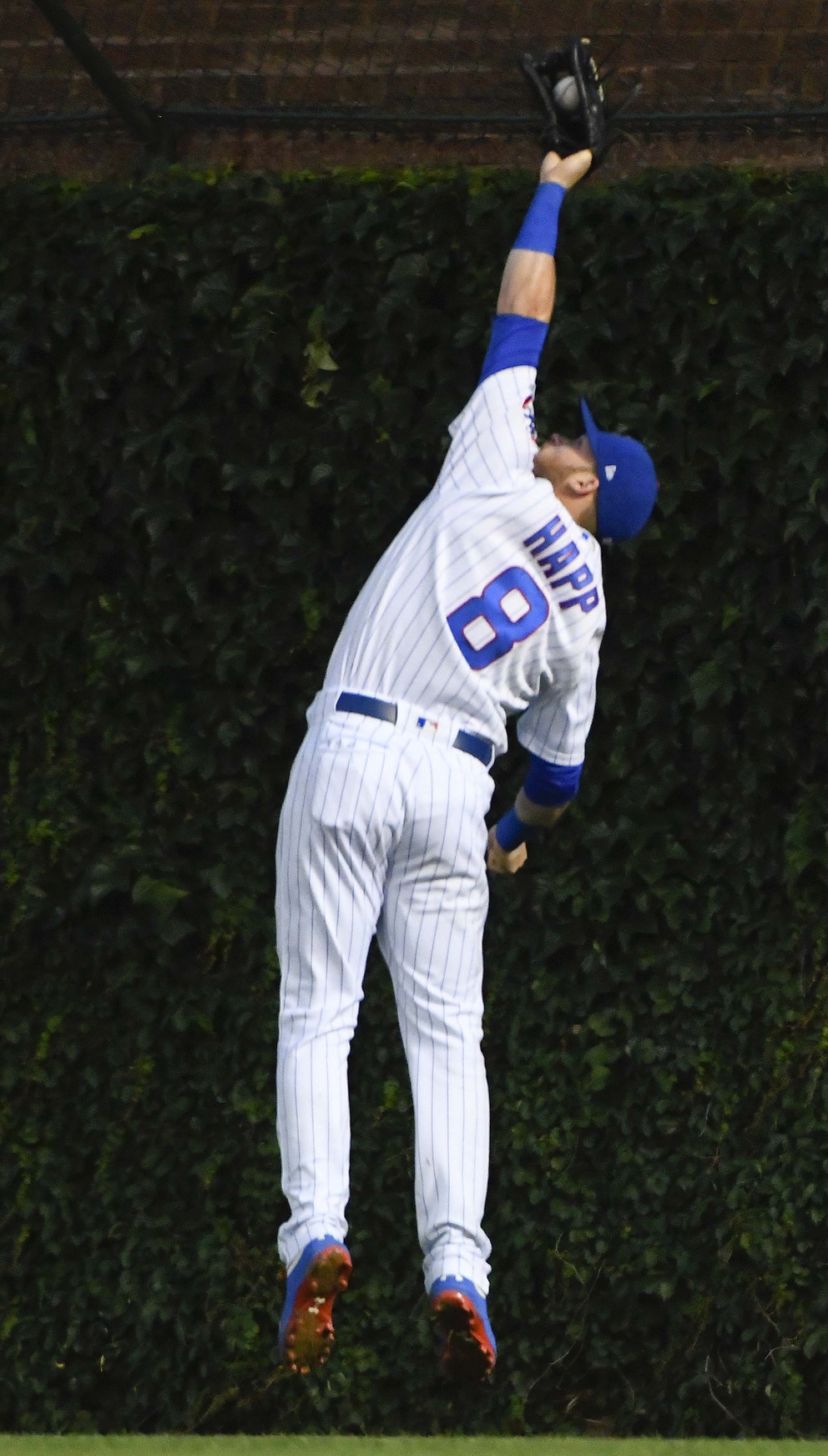This Cubs team is hard to pin down for a lot of people. Because they tend to have a lot of nights where they don’t score much, a lot think they’re offensively challenged. Except they’re one of the best offensive teams in the league. A lot of people have ranted and raved about the starting rotation, due to the slow starts for Quintana and Darvish and Hendricks’s home run problems. But they have one of the better starters’ ERA in the National League. People always complain about a bullpen because, by definition, it’s always comprised of the weakest players on your team, and this club’s ‘pen gets overshadowed by the Brewers, but it’s one of the best in the league as well.
So what’s going on here? Well, the Cubs are really good, and they’ve often been beaten by sequencing. And the other thing is they’re doing a lot of things like they did in 2016: focusing on pitching and especially defense.
The Cubs have the best defensive efficiency in the league, at 74.0 percent of batted balls being turned into outs. That’s eight points better than the Brewers in second, which is the same difference between Milwaukee and the Braves in ninth. So they’re pretty clearly the best defensive team in the league.
The improvements are all over from last year, as they’re 79.3 percent on ground-balls, up from 78.0% last year. Perhaps getting to deploy both Javier Báez and Addison Russell more often has helped, though Ben Zobrist has been steady when there as well. The real improvement is on fly balls, though, where the Cubs have a 90.9 percent conversion rate, against 88.1 percent last year. Playing Albert Almora more often combined with the improvement of Kyle Schwarber in left are obviously big reasons for this—and perhaps Ian Happ isn’t as bad as I like to pretend, to serve my own purposes.
None of these marks are as good as 2016’s otherworldly, once-in-a-generation defensive team, which sported defensive efficiencies of .801 on grounders, .941 on flies, and .745 overall. But what’s the same as 2016 is that the defense is bailing out the rotation something hard.
As Joe Sheehan pointed out in a recent newsletter, the difference the Cubs are carrying between their ERA and their FIP is the biggest of any team since 1969, and by some distance. It’s not too different than what they did in 2016. The difference this year is 0.79, and two years ago it was 0.62.
This trend is going to have to persist, because the Cubs have an issue in the rotation. Everyone is striking out fewer hitters than they have in the past. Jon Lester, Kyle Hendricks, and José Quintana are striking out nearly one hitter fewer per nine than they did last year. Tyler Chatwood is striking out more, but you know the issues there. Yu Darvish has also struck out more hitters than he did last year, but obviously he hasn’t always made the bell.
The defense has had to do more hard work. Both Quintana and Lester are giving up significantly more hard contact than they did last year, about a five point increase for Q and an eight increase rise for Lester. Hendricks has been about the same, and only Darvish has seen a reduction in his hard-contact rates.
All of these result in much harder contact than the rotation surrendered two years ago, when Jake Arrieta wasn’t quite this 2015 self but he still never got hit hard, and Hendricks was fantastic. So the Cubs are walking something of a tightrope here. They have the best defense, but it’s doing a lot of work. They’re only middling when it comes to their starters overall striking out hitters, and we know they walk the most in the league (though if you take Chatwood’s performance art for bears out of the equation, the Cubs overall walk rate would be middle of the pack in the NL, which… HUH?!). But they do rank highly overall in the type of hard contact they give up, and do get the most groundballs.
They say defense doesn’t slump. For the Cubs, it had better not.
Lead photo courtesy Matt Marton—USA Today Sports
